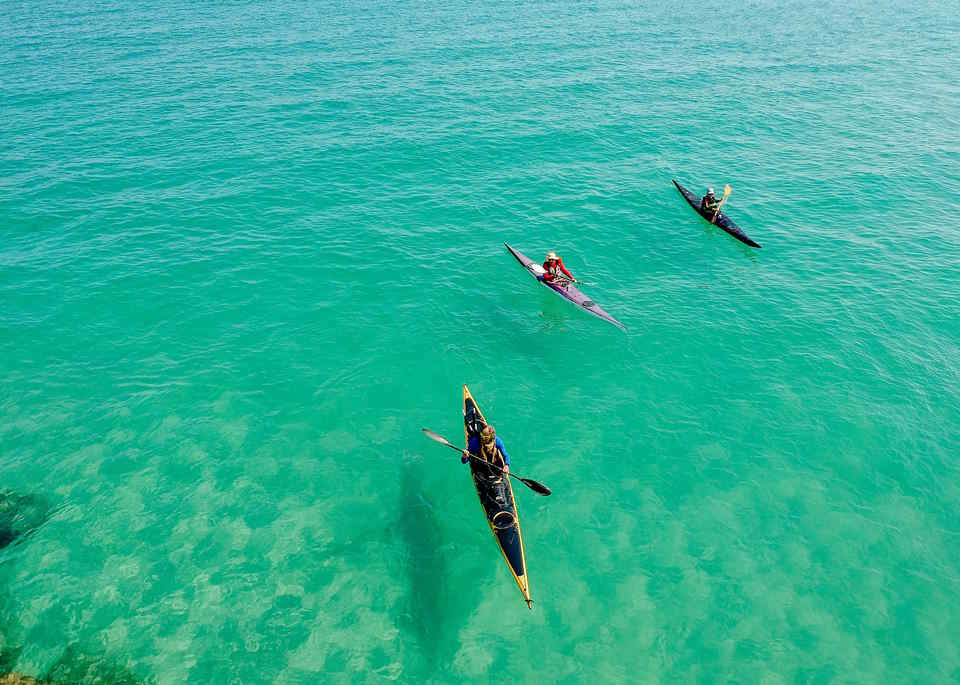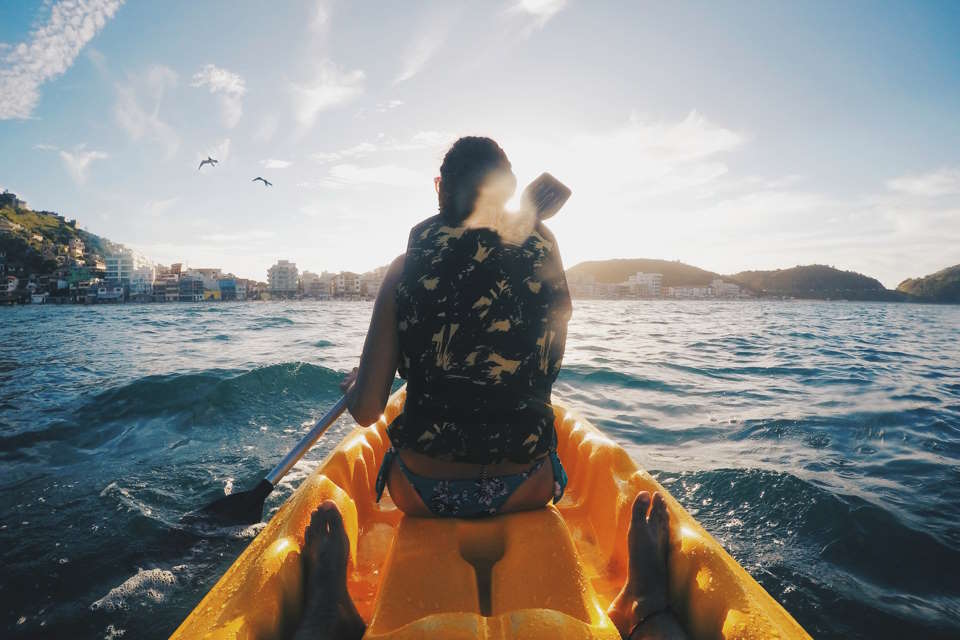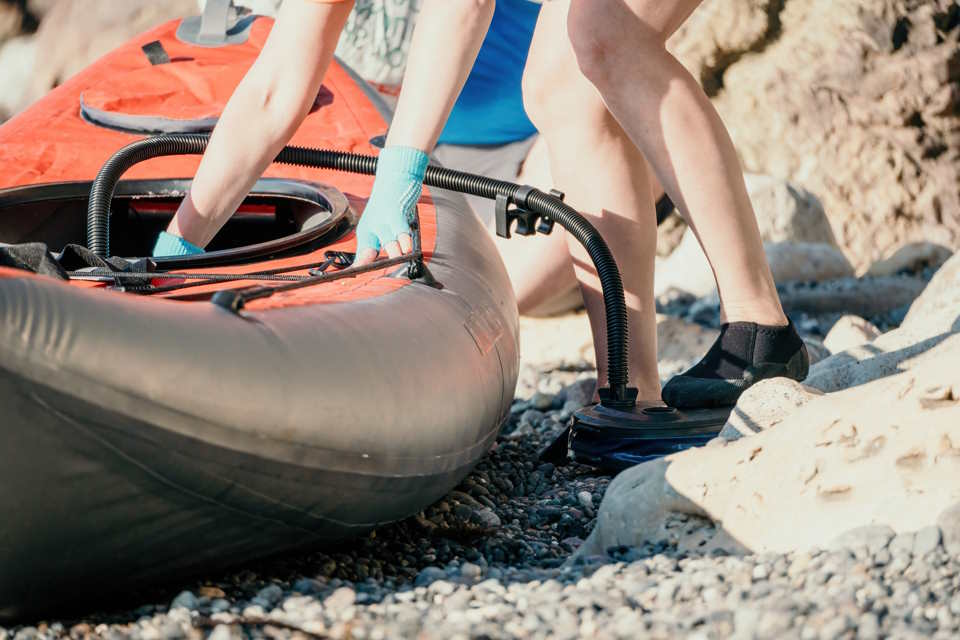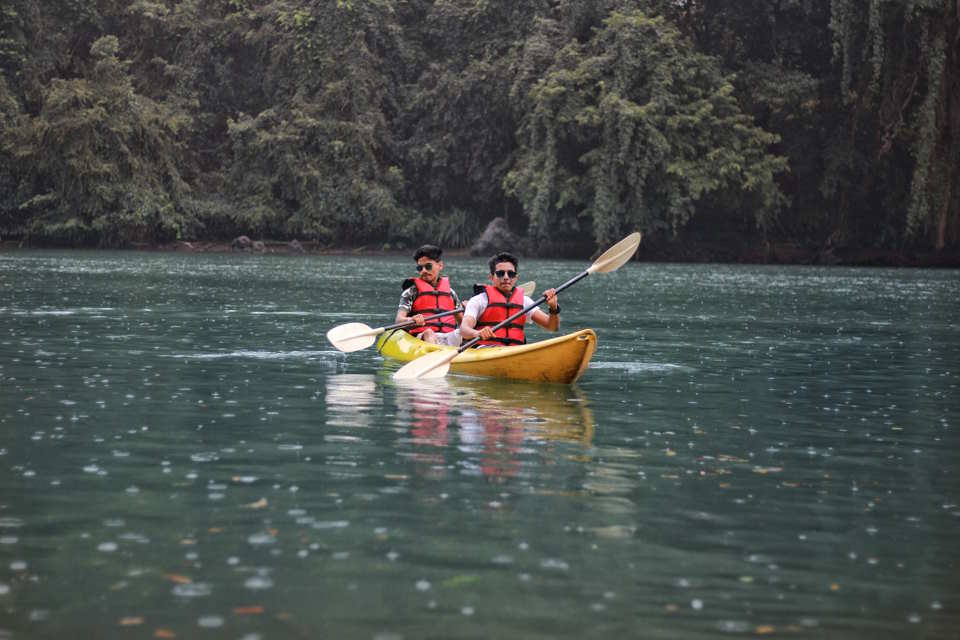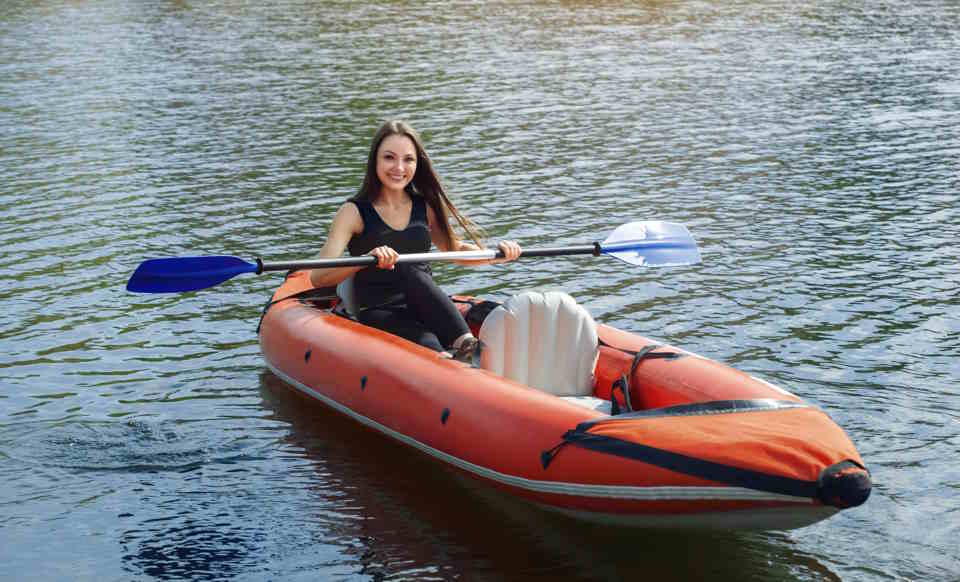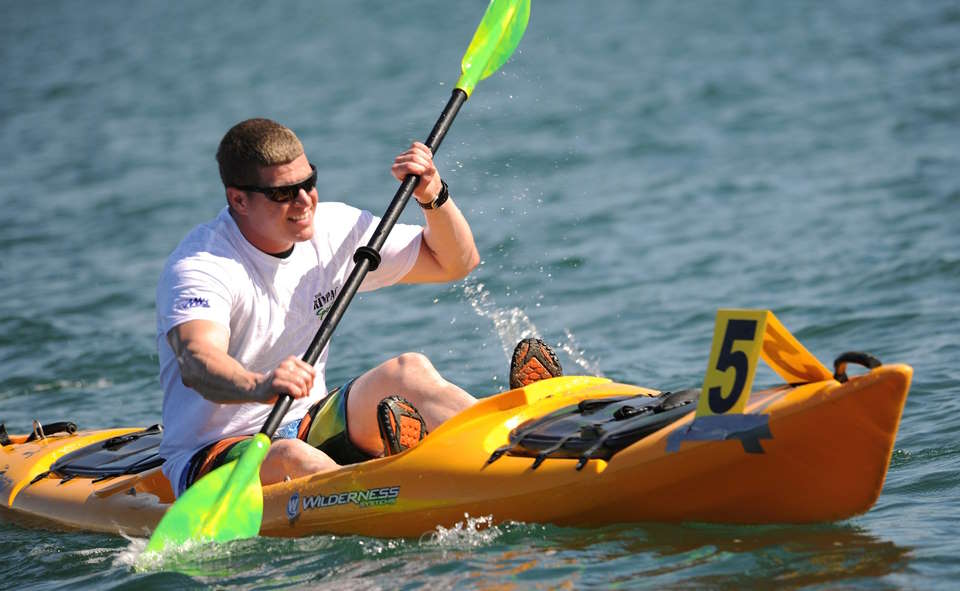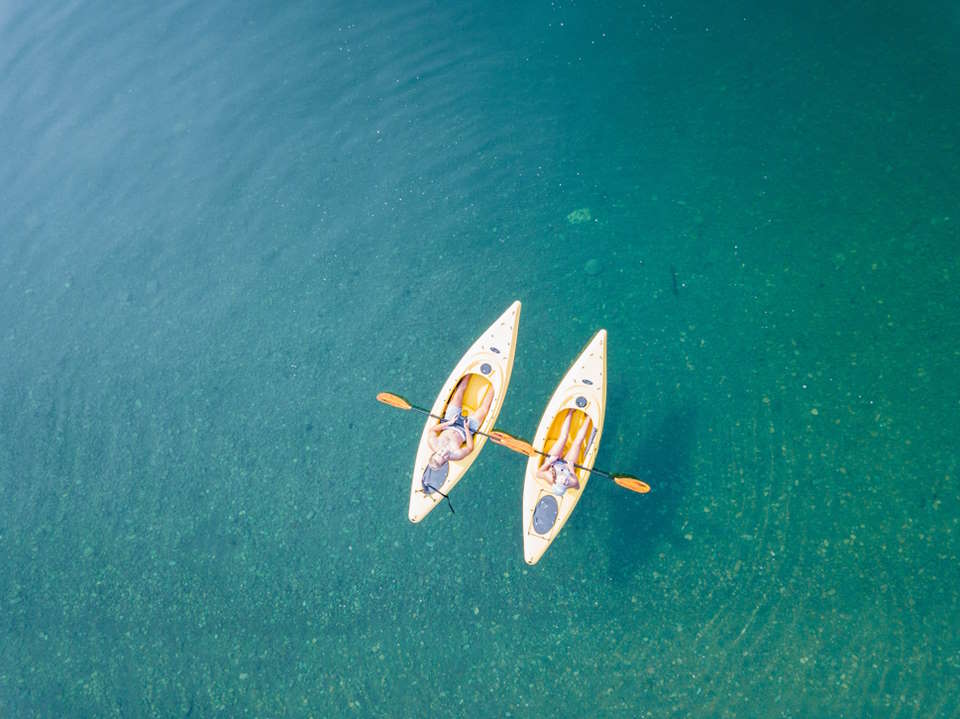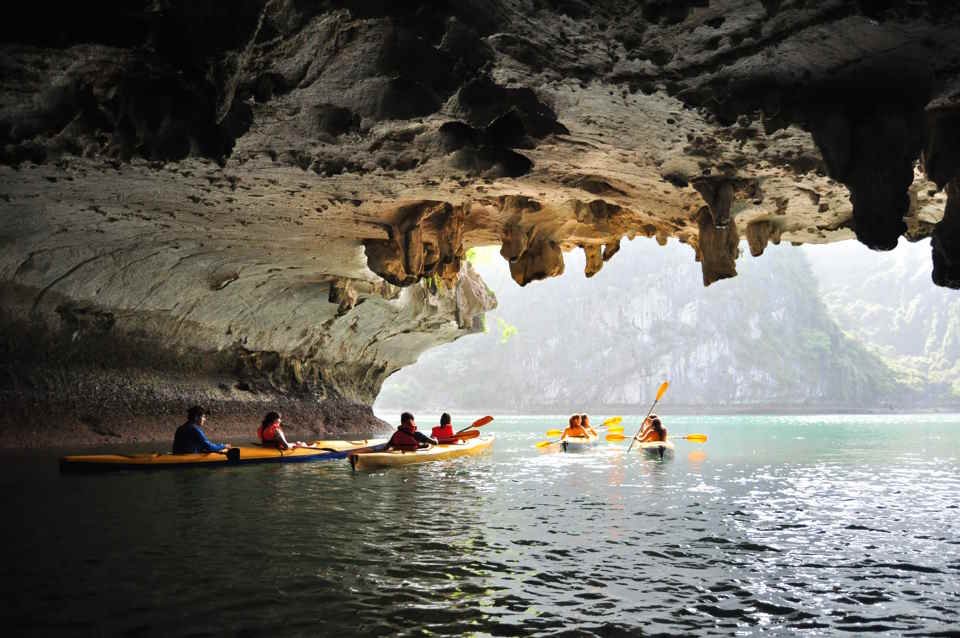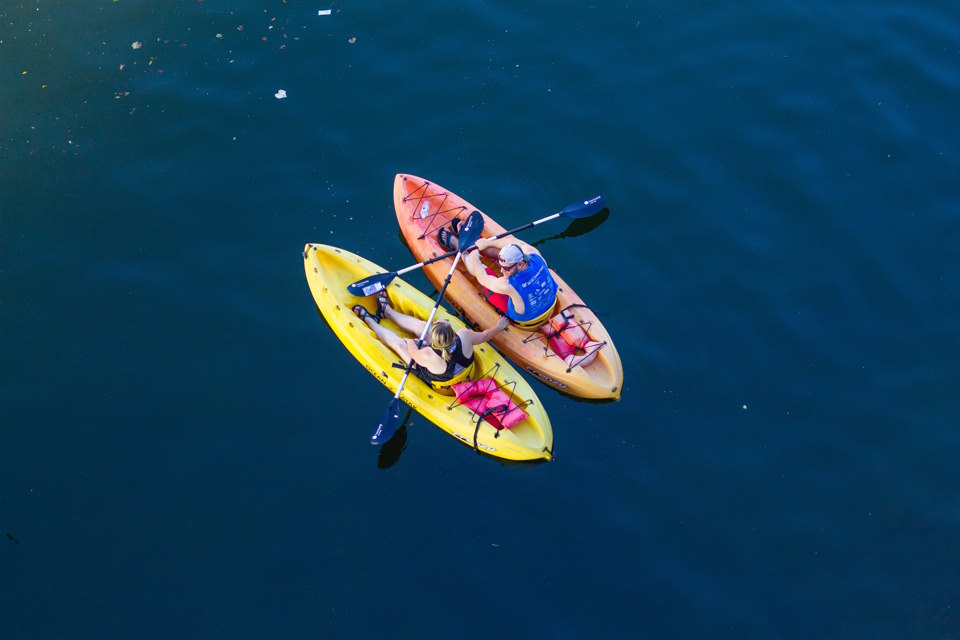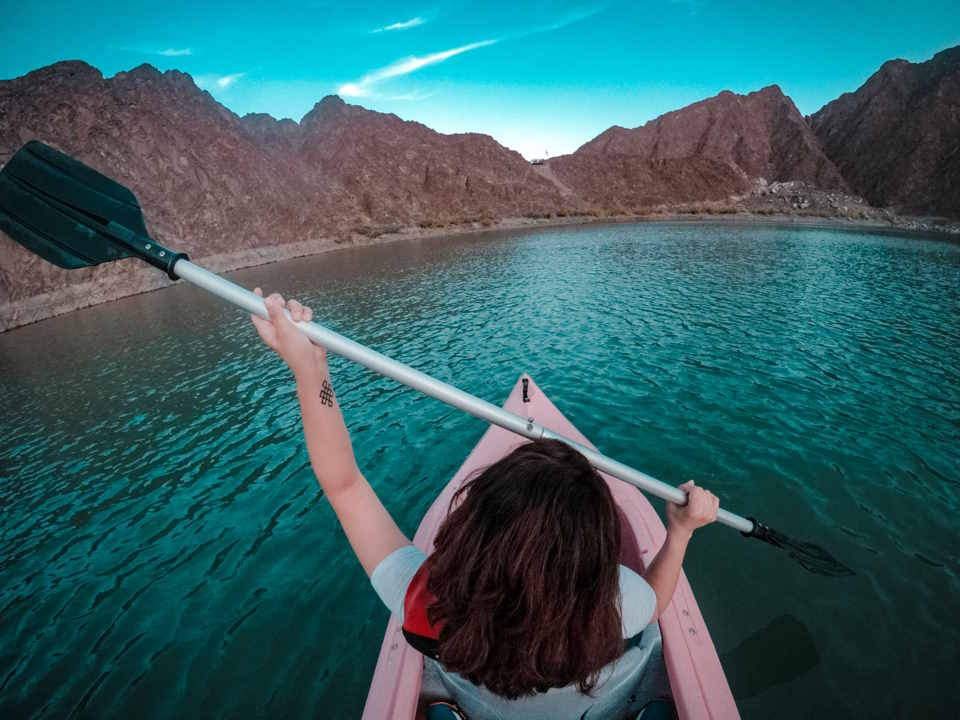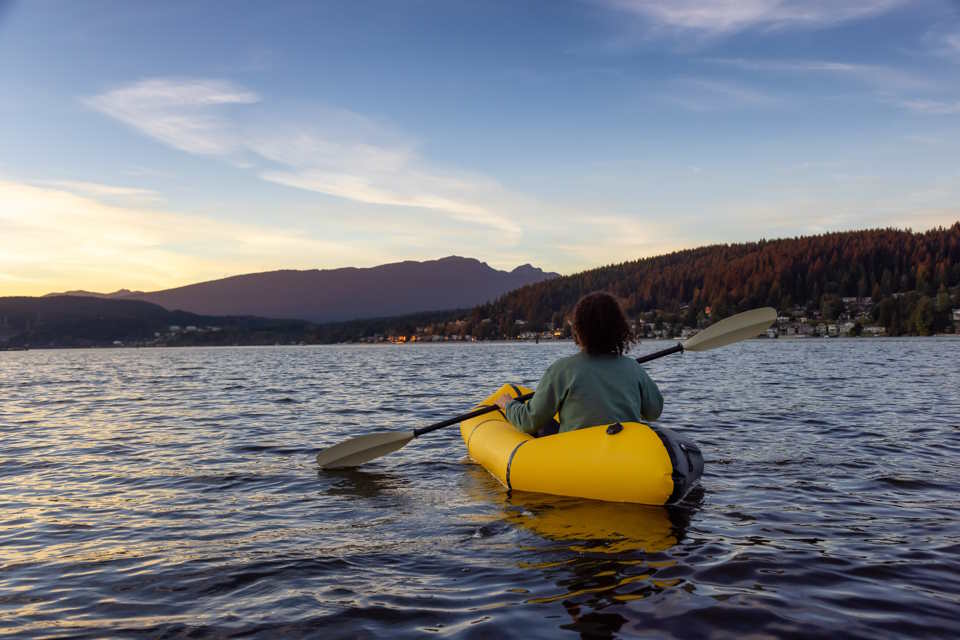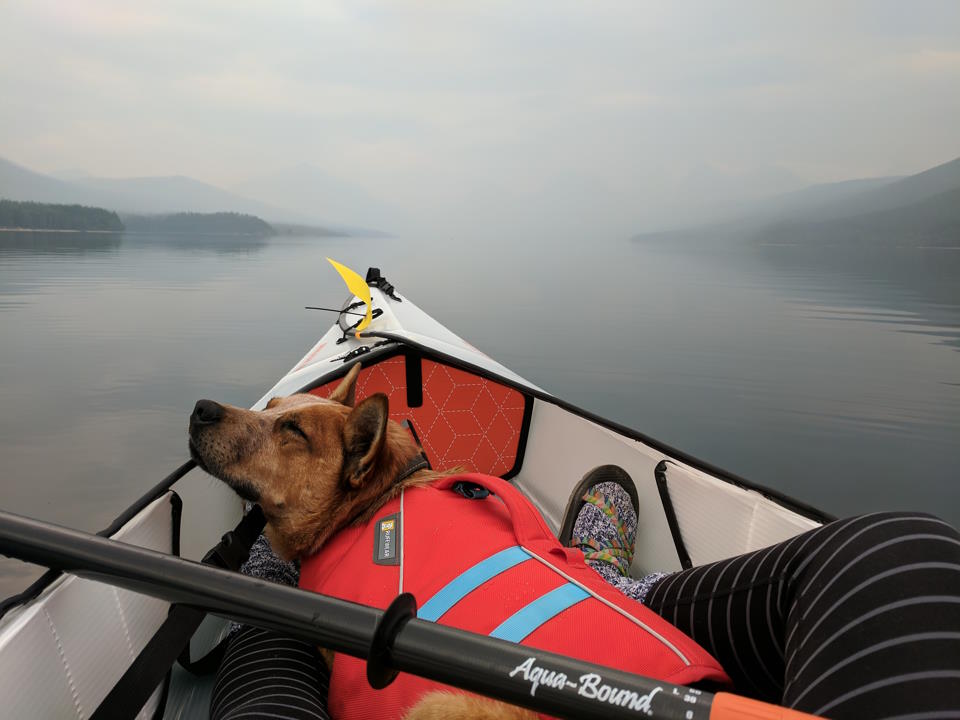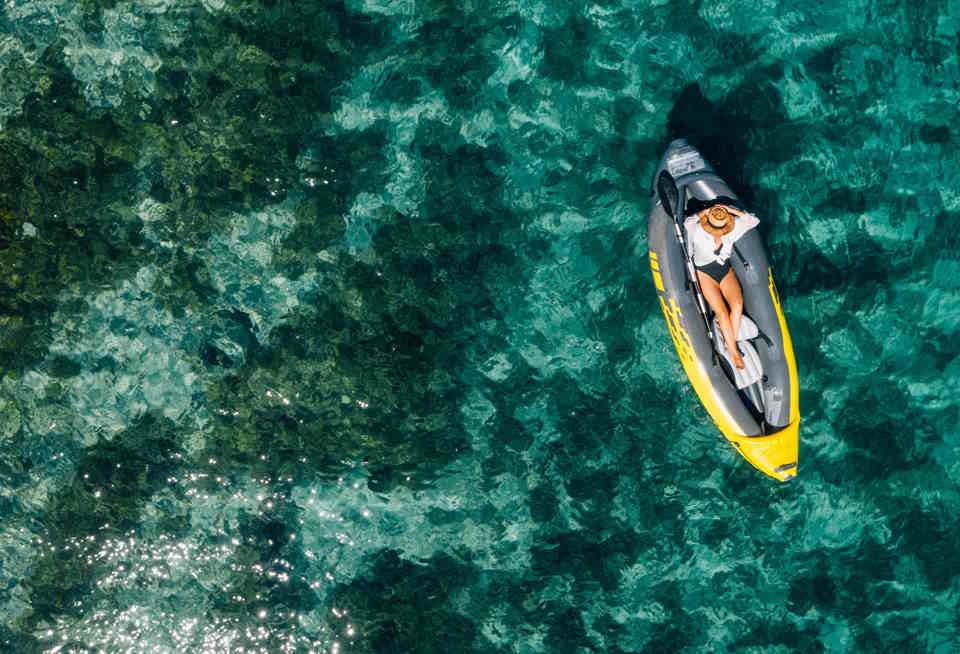Kayaking is a thrilling and exciting outdoor sport that offers the perfect combination of adrenaline, adventure, and nature. If you love kayaking or are just starting out, it’s important to understand how this thrilling activity evolved and how it has become one of the most popular water sports of our time. By tracing the history of kayaking, you can appreciate how this sport has developed over time, examine its cultural and environmental impacts, and explore its exciting future trends. We’ll take you on a journey through the origins of kayaking from the Inuit tradition to the modern sport we enjoy today. So grab your paddle and hold on tight, as we discover the fascinating history and significance of kayaking.
Introduction
Kayaking is a water sport that has gained popularity all around the world. It involves using a small boat known as a kayak, usually propelled by a double-bladed paddle. However, kayaking is not just a modern-day sport; it has a rich history that dates back centuries. Understanding the history of kayaking is important for appreciating the sport, and the significance it holds not just for the sporting world, but for culture and tradition as well.
The origins of kayaking can be traced back to the Inuit and other indigenous cultures who used kayaks for transportation, hunting, and fishing. Kayaks were made using materials readily available to the indigenous people such as wood, animal skins, and whalebone. These early kayaks were used to navigate the treacherous waters of the Arctic and were essential for survival.
In the 19th century, kayaking was adopted as a sport in Europe. The first kayaking club was founded in 1866 in Scotland, and from then on, kayaking spread widely across Europe. It was not until the 20th century that kayaking was introduced as a recreational and competitive sport in North America.
- Kayaking in Europe increased its popularity, with more competitions being organized and new kayaking techniques being developed.
- Kayaking in North America started in the late 1800s in New York and quickly spread to Canada and other parts of the continent. River kayaking and white-water kayaking came to be seen as a separate discipline.
Over the years, kayaking technology has evolved significantly. Modern kayaks are made of composite materials such as fiberglass, and are designed for better speed, stability, and durability. Kayaking now encompasses various sub-disciplines such as sea kayaking, slalom kayaking, and freestyle kayaking, among others.
Kayaking has also become a part of popular culture in recent years, with its presence in movies, books, and other media. However, it is essential to keep in mind the environmental and cultural impacts that kayaking can have. As a sport that depends on water bodies, kayakers must be aware of how their activities can affect the environment and the indigenous communities that reside near it.
| Environmental and Cultural Impacts include: |
|---|
| The noise from motor-driven boats used in kayaking tournaments can disturb aquatic life and destroy the natural habitats of wildlife. |
| The use of gadgets such as kayaks, paddles, and protective gear, if not made with sustainable materials, can contribute to the depletion of natural resources. |
| Kayaking events that take place in sacred areas may cause disruption in the cultural practices of the indigenous communities that reside there. |
Early Kayaks
The history of kayaking is an interesting and important subject for anyone who enjoys the sport. One aspect of kayaking history that is important to understand is its origins among the Inuit and other indigenous cultures. These cultures developed kayaks for practical purposes, such as hunting and transportation. Today, kayaking has evolved into a popular sport that is enjoyed by people all around the world. We will explore the early kayaks and the people who first used them.
The Inuit people are the earliest known users of kayaks. They used kayaks to navigate the icy waters of the Arctic Ocean for hunting and transportation. The Inuit kayaks are traditionally made from materials such as driftwood, bone, and animal hides. These materials were abundant in the Arctic region where the Inuit lived. The shape of the kayak was designed for ease of use and maneuverability in the water. The kayak was also equipped with a spray deck and a watertight seal to keep the hunter warm and dry in the cold waters of the Arctic.
Another indigenous culture that developed kayaks was the Aleut people, who lived on the Aleutian Islands. The Aleut kayaks were made from driftwood and sealskin, and they were used primarily for hunting sea mammals such as seals and sea otters. These kayaks differed from the Inuit kayaks in that they had a double-bladed paddle, which allowed for greater speed and control in the water.
- Overall, early kayaks were designed for practical purposes such as hunting and transportation in remote regions.
- The kayaks were made from locally available materials such as bone, animal hides, driftwood, and sealskin.
- The shape of the kayak was designed for ease of use and maneuverability in the water, and they were equipped with spray decks and watertight seals to keep the hunter warm and dry.
- The Inuit and Aleut people were among the earliest known users of kayaks, and they developed their kayaks for hunting sea mammals in the Arctic region.
Understanding the history of kayaking is important for appreciating the sport and its cultural significance. The early kayaks developed by indigenous cultures were the foundation for the kayaking we know and love today. These early kayaks show us how practical and adaptable humans have been in developing tools and technology to survive and thrive in different environments.
Kayaking in Europe
Europe is a continent with a long and rich history of water sports, from rowing to sailing to swimming. However, it wasn’t until the mid-19th century that kayaking as a sport began to gain popularity in Europe. At first, kayaking was seen as a form of transportation and a way for fisherman to haul their catch. But soon, adventurous individuals began using kayaks for recreation and exploration of the continent’s waterways.
One of the earliest kayaking clubs in Europe was founded in Germany in 1863, and the sport quickly spread throughout the continent. The first international kayaking competition was held in Switzerland in 1933, and kayaking became an Olympic sport in 1936. Today, Europe is home to some of the world’s top kayaking destinations, from the whitewater rapids of the French Alps to the gentle canals of Venice.
- Germany
- Switzerland
- France
- Venice
What makes kayaking unique as a sport is its ability to combine physical activity, adventure, and nature. Kayakers not only get to experience the rush of paddling through rapids or exploring hidden coves, but they also get to witness the natural beauty and wildlife that can only be seen from a kayak. Additionally, kayaking can be a low-impact form of exercise that is accessible to people of all ages and fitness levels.
| Benefits of Kayaking | Drawbacks of Kayaking |
|---|---|
| Low-impact exercise | Requires a body of water |
| Opportunity for adventure and exploration | May require expensive equipment |
| Chance to experience nature and wildlife | Can be dangerous if proper safety measures aren’t taken |
Kayaking in North America
North America has a rich history of kayaking as both a recreational and competitive sport. While the origins of kayaking can be traced back to the indigenous cultures of Greenland and the Arctic, kayaking found a new home in North America, where it evolved and transformed over time. We will explore the historical development of kayaking in North America, as well as its current status as a popular sport and leisure activity.
The early history of kayaking in North America can be traced back to the Inuit and other indigenous cultures, who used kayaks primarily for hunting and transportation. These kayaks were typically made of animal skins and bones, and were highly maneuverable in rough seas. However, it wasn’t until the 18th and 19th centuries that kayaking began to gain popularity as a recreational sport among non-indigenous populations in North America.
- One of the earliest records of recreational kayaking in North America dates back to the late 1800s, when kayaks were used for leisurely outings on lakes and rivers.
- In the early 1900s, kayaking began to gain popularity as a competitive sport, with the first kayak races taking place in New York and Canada.
- By the mid-20th century, kayaking had become a well-established competitive sport, with national and international competitions held regularly.
Over the years, kayaking has continued to evolve and transform, with new technologies and designs improving the performance and safety of kayaks. Today, kayaking is a popular leisure activity, enjoyed by people of all ages and skill levels. Whether you’re kayaking on a tranquil lake or tackling whitewater rapids, kayaking in North America offers a unique and thrilling experience.
| Type of Kayaking | Description |
|---|---|
| Recreational kayaking | Kayaking on calm waters for leisure and enjoyment |
| Whitewater kayaking | Kayaking on fast-moving rivers with rapids and obstacles |
| Sea kayaking | Kayaking on the ocean for adventure and exploration |
| Surf kayaking | Kayaking in the waves with a surfboard-like kayak |
As with any sport or leisure activity, it’s important to practice safety and respect for the environment when kayaking in North America. Be sure to wear appropriate safety gear, follow regulations, and leave no trace when enjoying the natural beauty of rivers, lakes, and oceans.
Modern Kayaking
Kayaking is one of the most popular water sports in the world which requires a kayak, a paddle, and the skill to paddle through water. Modern kayaking has come a long way since its humble beginnings. Advancements in technology have revolutionized the sport and made it more accessible than ever before.
One of the major advancements of modern kayaking is the use of lightweight materials. Traditional kayaks were made of animal skin or wood, but today kayaks are made of durable yet lightweight materials like plastic, fiberglass, and carbon fiber. These materials make it easier for kayakers to navigate through water, especially in rough conditions.
Other modern technological advancements include:
- The use of foot pedals to control the rudder, which allows kayakers to navigate through water more efficiently and maneuver easily.
- The use of GPS technology to track routes and share them with other kayakers.
- Inflatable kayaks, which are lightweight and easy to transport.
Modern kayaks also come in various designs to make the sport more comfortable and enjoyable. For example, kayaks with tall backrests provide better back support, and kayaks with higher sides offer improved stability and safety.
| Types of Modern Kayaking | Description |
|---|---|
| Whitewater Kayaking | Whitewater kayaking is a type of kayaking that involves paddling down fast-moving rapids and waterfalls. |
| Sea Kayaking | Sea kayaking is a type of kayaking that involves paddling through open water, such as oceans or large lakes. |
| Recreational Kayaking | Recreational kayaking is a low-impact type of kayaking that is perfect for beginners. It is typically done in calm waters like lakes or slow-moving rivers. |
Modern kayaking has evolved into a competitive sport as well as an adventure activity. There are kayaking races and competitions all over the world, and many kayakers now use kayaking as a means of exploring new areas and experiencing nature up close. The sport has boomed in popularity, and kayaking enthusiasts continue to develop new techniques and technologies to push the boundaries of the sport even further.
Kayaking in Popular Culture
Kayaking has not only become a popular sport and recreational activity, but has also left a mark on popular culture over the years. From film to literature to other forms of media, kayaking has enjoyed a prominent position. We will explore the instances of kayaking in popular culture and how its depiction has evolved over the years.
Film
- In the 1975 thriller ‘Jaws’, Chief Brody’s wife can be seen kayaking before being attacked by the shark.
- The 1994 British comedy ‘Four Weddings and a Funeral’ features a kayak race between two characters, leading to a hilarious climax.
- ‘The River Wild’ is a 1994 adventure thriller which takes place on a wild river rafting trip. The actors in the film use kayaks to navigate through treacherous rapids.
Literature and Television
- The critically acclaimed 1952 novel ‘The Old Man and the Sea’ by Ernest Hemingway features a character on a solo kayak fishing trip.
- In the popular television show ‘Lost’, characters are often seen kayaking to and from the island they are stranded on.
- The survival novel ‘Hatchet’, written by Gary Paulsen, features the protagonist Brian Robeson using a kayak to escape the wilderness he is stranded in.
Other Media
| Magazines: | Kayaking Magazine, Paddler Magazine, Canoe & Kayak |
| Video Games: | Splatoon 2, Far Cry 4, Call of Duty: Black Ops III |
| Music: | The song ‘Kayaking Solo’ by artist Dillon Warnek |
With such a vast presence in popular culture, it is clear that kayaking has become much more than just a physical activity. Whether it is through literature, film, or any other medium, kayaking continues to inspire and influence people around the world.
Environmental and Cultural Impacts
Kayaking is a popular recreational and adventure sport that has been enjoyed by people of all ages and backgrounds for centuries. While kayaking is generally considered a low-impact activity that is environmentally friendly, there are some concerns about the impact that kayaking can have on the environment and indigenous cultures. It is important to understand these issues in order to ensure that kayaking continues to be a sustainable and enjoyable activity for generations to come.
The impact on the environment: Kayaking is a great way to explore and appreciate the natural beauty of rivers, lakes, and oceans. However, kayaking can also have negative environmental impacts if proper precautions are not taken. Certain types of kayaks can disturb sensitive aquatic ecosystems by damaging underwater plants and stirring up sediment. Kayakers can also potentially spread invasive species if they do not clean their equipment properly between outings. As kayaking continues to grow in popularity, it is important that kayakers take responsibility for minimizing their impact on the environment.
- One way to reduce the impact of kayaking is to choose a kayak that is designed specifically for your intended use. For example, a recreational kayak may not be suitable for kayaking in shallow, rocky environments.
- Kayakers should also be mindful of the wildlife and natural habitats that they encounter while kayaking. Respectfully observe wildlife from a distance and avoid disturbing natural habitats.
- Proper maintenance and cleaning of kayaks and other equipment can also help prevent the spread of invasive species. Always remove any visible vegetation and inspect the kayak for any other potential hitchhikers before leaving the water.
The impact on indigenous cultures: Kayaking has a rich history among many indigenous cultures, including the Inuit of northern Canada and Greenland. In these cultures, kayaking was not just a means of transportation but also an integral part of their way of life. As kayaking becomes more popular as a recreational activity, there is a concern that the cultural significance of kayaking among indigenous communities may be diluted or forgotten.
- One way to help preserve the cultural significance of kayaking is to educate oneself about the history and traditions of indigenous kayaking. Many indigenous communities have programs and initiatives that promote the cultural significance of kayaking.
- Respect for indigenous communities is also key. When kayaking in areas that are traditionally used by indigenous communities, it is important to be aware of customs and traditions and to be respectful of them.
- Finally, it is important to promote diversity and inclusivity within the kayaking community. Recognize and celebrate the contributions of diverse communities to the sport of kayaking.
The Future of Kayaking
Kayaking is a thrilling water sport and adventure activity enjoyed by thousands of people around the world. Over the years, the sport has undergone various changes and developments, expanding its boundaries, rules, and techniques. Today, kayaking is not just a recreational activity but also a competitive sport, a means of transportation, and a way of exploring nature. We will take a closer look at the future of kayaking, discussing the latest trends and developments in kayaking technology and culture.
One of the most significant changes in kayaking is the incorporation of technology. Kayak manufacturers are introducing modern features and advanced materials to improve the performance and durability of kayaks. For instance, some kayaks are now equipped with carbon-fiber paddles, which are lightweight and comfortable to use. Moreover, kayaks are made using advanced materials, including high-density polyethylene and thermoformed plastic, which offer superior strength, stability, and maneuverability. The use of GPS and digital mapping technology is also gaining popularity among kayakers, making navigation easier and safer.
- Another trend in kayaking is the growth of kayaking as a competitive sport. Kayaking competitions are now held at different levels, including national and international levels. The sport has various categories, including sprint, slalom, and marathon, which challenge kayakers in different ways. Moreover, kayakers are now competing in team events, such as relay races, adding to the fun and excitement of the sport.
- Kayaking is not just about racing and competition. Many kayakers are exploring nature and wildlife by kayaking in different water bodies, including oceans, rivers, and lakes. This trend has led to the development of new kayaking destinations, eco-tourism opportunities, and adventure sports. Kayakers are also taking part in charitable events, using their kayaks to raise funds for a cause.
- Kayaking is also becoming more inclusive and diverse, with more people from different backgrounds taking up the sport. Kayaking clubs and groups are sprouting up across the world, providing opportunities for people to learn and engage in the sport. Moreover, kayaking is being used as a therapy and rehabilitation tool for people with physical disabilities and mental health conditions.
Conclusion
Kayaking, as we know it today, has come a long way from its inception as a crucial mode of transportation for the Inuit and other indigenous cultures. With the evolution of technology and the advent of recreational and competitive sports, kayaking has transformed into a popular water sport embraced by adventure enthusiasts across the world. Today, kayaking encompasses a wide range of activities, including sea kayaking, white-water kayaking, and flat-water racing, among others.
The history and evolution of kayaking illustrate a beautiful cultural and technological journey. From its initial use for subsistence and survival, kayaking has transitioned into a popular sport, recreational activity, and an eco-tourism opportunity. Modern-day kayaking owes its diverse and rich culture to the combined influences of various indigenous cultures and the technological advancements of European and North American pioneers.
Over the years, kayaking has captured popular culture’s imagination, with its presence in various mediums like films, literature, and advertising campaigns. Moreover, kayaking has established itself as an adventurous and eco-friendly way to connect with nature and explore undiscovered terrains.
- However, the sport’s commercialization and popularization have also had adverse impacts on the environment and indigenous cultures. Unregulated tourism and reckless kayaking practices have led to the degradation of natural ecosystems and the loss of ancestral knowledge and practices among indigenous communities.
- Moreover, kayaking culture has faced several societal challenges, including accessibility, gender stereotypes, and institutionalized racism. Recently, the rising popularity of kayaking has brought attention to these issues, and efforts are being made to make kayaking more inclusive, accessible, and sustainable.
Looking forward, the future of kayaking seems bright, with technological advancements and cultural awareness opening up new avenues for the sport. The development of eco-friendly kayaks made of bio-degradable materials and innovation in paddling technologies has led to increased sustainability and efficiency in kayaking.
| Year | Event |
|---|---|
| 1936 | Olympic debut of kayaking and canoeing |
| 1950 | The founding of the International Canoe Federation (ICF) |
| 1985 | The first Sea Kayaking world championship held |
| 2000 | The introduction of women’s Kayaking for the Olympics |
In conclusion, the story of kayaking from its inception to its modern form is a fascinating one. The significance of kayaking lies not just in its commercialization but also its ability to connect people with nature and their cultural heritage. While navigating the challenges faced by kayaking culture as a whole, it is crucial to preserve its essence, embrace innovation, and continue to enjoy the great adventure that this sport offers.


